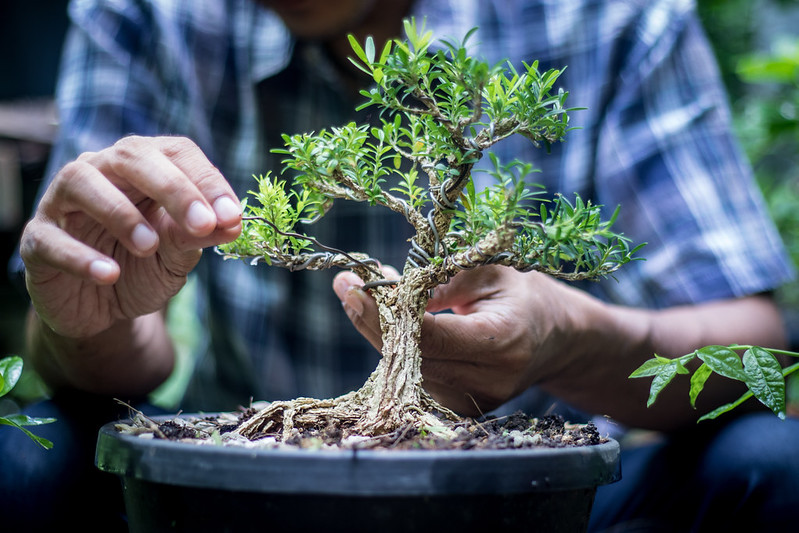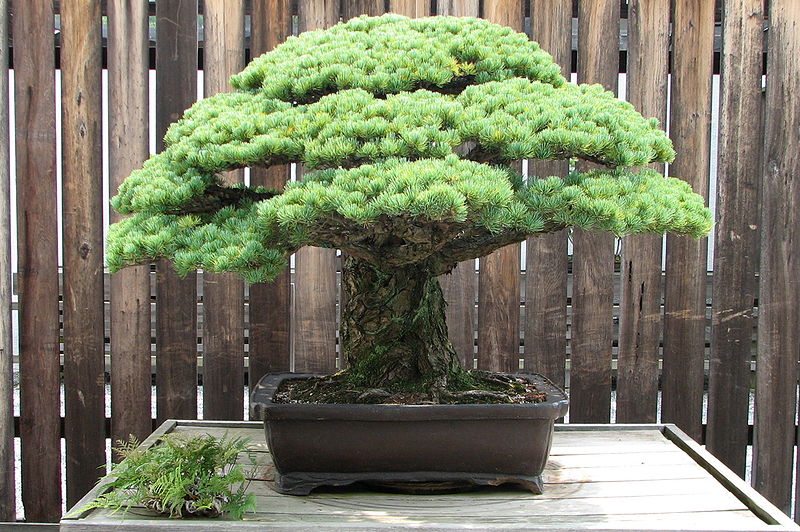
Appreciating the Beauty of Bonsai
Bonsai 盆栽, means “plantings in tray,” from the Japanese terms bon, which refers to a tray or shallow pot, and sai, which refers to plantings. It is the art form of growing miniature trees in pots or trays. The origins of bonsai are in ancient China where it was originally known as “pun-sai” or “penjing.” It was often grown in the shapes of both real and mythical creatures such as birds and dragons.
The trident maple above, Acer buergerianum, is from the penjing collection at the National Bonsai and Penjing Museum in the U.S. Its foliage and stems are trimmed in the shape of a dragon.
Japan adopted the art form during the Kamakura period in 1185-1333 under the influence of Zen Buddhism. Bonsai-making was initially practiced by monks in their monasteries but was later introduced to the elite and upheld by them as a symbol of prestige. Over the centuries, its popularity has spread all over the world.
Ideology
Bonsai-making is not just simple horticulture, but mostly an expression of beliefs and aesthetic beauty. The Japanese ideology of bonsai is the marriage of ancient and Eastern philosophy, with its emphasis on the balanced relationship among nature, man, and the soul. Each part of the bonsai–shape, color, texture, container–is meticulously planned and maintained to create a symbolic, attractive result. The end goal of bonsai-making is to recreate nature in a realistic and miniaturized form.
Tako bonsai tree.
Growing a Bonsai
Bonsai cultivation involves growing the tree from cuttings or a seed. A bonsai plant is not a specific or special kind of tree. It can be any variety, but to make it look like a miniature replica of the standard tree size, it takes meticulous maintenance. There are many techniques you can use to mold the bonsai’s form, two of the popular ways are pruning and wiring. When pruning your tree, it is important that you already know the shape you want. This involves deciding which branches should be kept and removed to achieve the intended design.
Two advanced techniques are layering and grafting. With layering, the tree grows new roots at strategic areas by manipulating the flow of nutrients from the root system. Grafting is joining together the stump (which includes the root system and the lower part of the trunk) with the upper portion of another trunk.
Styles
Several styles of bonsai guide the formation of the tree. Common styles include the formal upright or chokkan style, which displays an upright and tapering trunk; the slant style or shakkan, where the trunk is growing diagonally from the soil; and the broom or hokidachi style, where the trunk is upright and the branches and leaves form a thick round shape.
Most bonsais can be anywhere from 5 cm to 1 meter in height, and they can live to be hundreds of years old as long as they are properly tended.
This Japanese White Pine (Pinus parviflora ‘Miyajima’) bonsai is also known as Hiroshima Survivor because it survived the atomic blast in Hiroshima in 1945. It is nearly 400 years old. | Ragesoss
Interested to know more about the Japanese art of bonsai? You can check out these links.



